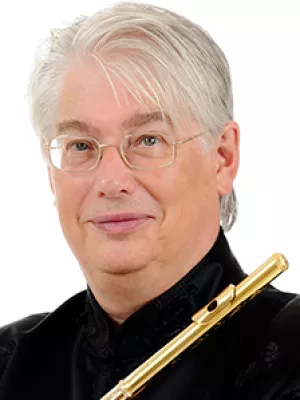
Anders Ljungar-Chapelon
Professor

Le respect de la tradition : Om den franska flöjtkonsten: dess lärande, hantverk och estetik i ett hermeneutiskt perspektiv
Author
Summary, in English
The present study describes topics related to music education, and the education of flautists, primarily on a professional level, covering a period from early 18th Century up to the early 21st Century within the French flute tradition. Further related areas of importance are concepts such as intuition, imitation, mimeses and maieutics and their relation to a flautist’s learning and teaching. For this purpose the form of two empirical studies has been chosen. The study as a whole can be described as a comparative method combining printed artefacts such as flute methods, literature, compositions and exercises for flute, historical recordings together with two case studies based on interviews.
The theoretical framework concerning method and theory is based on hermeneutics and the universe of German philosopher Hans-Georg Gadamer. Other important sources are Plato (maieutics), Aristotle (mimesis), Schopenhauer (mimesis), Larsson (intuition), Heidegger and Vygotskij. Concerning thoughts about artistic creation, and the action of performing music, important ideas are drawn from the output of Marcel Proust and Jean-Philipp Rameau.
The research question is formulated as: Which are the learning tools within the French flute tradition and its teaching of the art of flute playing concerning its craftsmanship, artistry and aesthetics when this is described in (i) related texts, music and historical recordings; (ii) interviews with flute virtuoso players and teachers who represent the above mentioned tradition, including changes over time.
The first study – Study A – attempts to describe and analyse the art of flute playing with its focus on the French flute tradition, and its teaching and learning methods. The description is done from a historical point of view, including a survey of related flute instruments, flute methods, as well as secondary literature and flute studies, exercises, flute music and historical recordings covering the period from early 18th Century up to the present day.
The second study – Study B – is based on interviews with flautists Peter Lloyd (1931) and Alain Marion (1938-1998). The interviews deal with questions about teaching methods, aesthetics of flute playing, and mechanisms related to how to practice, and how to develop flute technique and interpretation within the French flute tradition. Parts of the interviews represent genuine values as being historical documents, never before documented, within research concerning the flute and its 20th Century history and its teaching, with a focus on the French flute tradition. Special attention has further been given to flautistic aesthetics, artistic ideas as well as topics concerning instrumental skills and learning as realised within the framework of a branch of the French flute tradition often coined as L’École de Marseille during the 20th Century.
The results show that imitation, maieutics and intuition have been used as mediating tools within the French tradition during three hundred years. Further concepts as Du naturel dans l’art, Le son naturel and Bon Goût have been of significant importance concerning the development of craftsmanship, aesthetics and learning. Other findings are differences if a student is: (i) born into a tradition, and (ii) adopting a tradition coming from another cultural context. These differences show two ways of learning whereby being born into the tradition amplifies the need for less reflection whereas adopting a new tradition requires more reflection. A final result is the traditions inherent tendency to teach the students to be their own teachers. The conclusion is the need for a new concept – automaieutics – to further development of self-teaching skills.
Department/s
- Malmö Academy of Music
Publishing year
2008
Language
Swedish
Publication/Series
Studies in music and music education
Issue
12
Document type
Dissertation
Publisher
Malmö Academy of Music, Lund University
Topic
- Music
Keywords
- technical mastery
- virtuosity
- teaching methods
- spontaneity
- art
- Aesthetics
- automaieutics
- coding
- flute
- education
- flute playing
- flute teaching
- flute tutors
- teaching in group
- imitation
- individual teaching
- interpretation
- intuition
- instrumental skills
- involuntary memory
- learning
- maieutics
- mimesis
- mediating tools
- music
- practice
- musical expression
Status
Published
Supervisor
- Göran Folkestad
ISBN/ISSN/Other
- ISSN: 1404-6539
- ISBN: 9789197605342
Defence date
12 December 2008
Defence time
10:00
Defence place
Musikhögskolan i Malmö
Opponent
- Sture Brändström (Professor)